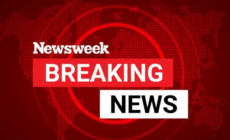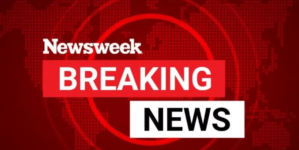-
Whar ‘Group 7’ is, and how its creator won at TikTok - 12 mins ago
-
Women Are Losing in Trump’s Economy - 13 mins ago
-
Phillies Expected To Lose Electric 9-Year Veteran To Free Agency - 29 mins ago
-
In First Six Months, Cost of Weather Catastrophes Escalated at a Record Pace - 57 mins ago
-
Browns Pushed to Aggressively Pursue Star WR Before NFL Trade Deadline - about 1 hour ago
-
Donald Trump Rebukes Cattle Ranchers Concerns About Argentina Beef Plan - 2 hours ago
-
Maine U.S. Senate Candidate Says He Covered Up Tattoo That Had Nazi Imagery - 2 hours ago
-
LeBron James Reveals NBA Team Under the ‘Most Pressure’ This Season - 2 hours ago
-
Challenges to Pelosi part of broader movement to replace the Democratic Party’s old guard - 2 hours ago
-
The Louvre’s Attraction Is Its History. That’s Also Its Weakness. - 2 hours ago
Map shows which states face recession, and which are growing
While official figures show America’s economy growing at a robust pace, a number of states are currently teetering on the edge of an economic downturn, according to Moody’s Analytics chief economist Mark Zandi.
In a recent analysis, Zandi said that 22 states alongside Washington, D.C.—which together represent almost a third of America’s GDP—are currently in or at high risk of entering a recession.
“These regions, spread across every part of the country, are showing signs of strain,” he wrote. “Another third of states are treading water, while the rest are still growing, though their momentum is fading.”
Why It Matters
Stronger-than-anticipated GDP growth in the second quarter has tempered some fears over an imminent recession in the U.S., and the administration maintains that any disruptions caused by tariffs will soon pave the way for a period of significant economic expansion. To economists like Zandi, however, the country still remains at high risk of entering a downturn, with inflation, softness in the labor market and noticeable declines in consumer confidence weighing on their forecasts.
What To Know
Zandi’s analysis serves as an update to a general economic assessment he published in August, at which point he found that 21 states and the nation’s capital, were either in a recession or at high risk, 13 could be classified as “treading water” and 16 were growing.
The sole change since his original report is Michigan, which has shifted from the “treading water” category to join 21 others now considered in dire economic straits.
Recessions are often diagnosed by two consecutive quarters of negative GDP growth. The U.S. economy expanded at an annual rate of 3.8 percent in the second quarter, according to the Bureau of Economic Analysis (BEA), and GDP increased in 48 states during this period.
However, Zandi has told Newsweek his “subjective” assessment is based on a number of “coincident measures of economic activity,” and employs a methodology similar to that used by the National Bureau of Economic Research (NBER), the nonprofit research group which retroactively dates U.S. recessions.
“The most important data include payroll and household employment, unemployment, a measure of industrial production, personal income, retail sales, and building permits,” Zandi wrote in Wednesday’s analysis. “Other data that is used in this assessment include unemployment insurance claims, migration flows, household credit growth and delinquency rates, house prices, Fed surveys, and state tax revenues.”
He added that the Washington, D.C.’s economy has been “struggling the most” as a result of federal job cuts and furloughs.
Texas, one of the nation’s economic powerhouses, continues to expand, while California and New York are still defined as “treading water.” In an interview with Newsweek following his August report, Zandi said that the fate of these two states’ economies “may decide what happens to the nation.”
“If California and New York weaken and start to contract, the national economy is going to go into recession,” he said. “And if those economies hold their own or start to accelerate or reaccelerate, the economy is going to be fine and get through without recession.”
Zandi told Newsweek that his concerns over a nationwide recession had been heightened by jobs growth slowing to a “virtual standstill,” as well as the possibility of tariffs translating into higher consumer goods prices.
Joe Gagnon, senior fellow at the Peterson Institute for International Economics, told Newsweek that firms had held off on price hikes so far this year as they waited to see whether the administration would negotiate deals that could bring the duties down to more manageable levels. However, he believes these effects will now begin to show up in official inflation data.
“At some point in August—obviously it might depend on the firms—but it was in the month of August that I think we realized, ‘ah, we’re not negotiating these tariffs anywhere near as low as many people thought,’” he said.
“And so then I think September becomes the first month in which you would expect firms to say, ‘okay, well, these tariffs are here to stay, at least most of them, and we’ve got to start raising our prices to some extent.’”
What People Are Saying
Mark Zandi on Tuesday wrote: “Whether the national economy suffers a downturn appears to rest on the big California and New York economies. Neither economy is in recession, but both are struggling to gain traction. De-globalization, including the trade war and highly restrictive immigration policy, is a headwind to growth, but artificial intelligence and the boost it is providing to investment and the stock market, household wealth, and spending is a tailwind to growth. How these cross-winds play out in these states may hold the key to how the national business cycle will unfold.”
Federal Reserve Chairman Jerome Powell, during a conference in September, said: “We all see the data that it’s just gotten tough for people just entering the labor force to be hired. But remember, the overall national aggregate hiring rate is at a very, very low level. The layoff rate is also at a very, very low [level]. You’re in a low-hire, low-fire economy. And it feels like companies are just—they’ve kind of stopped hiring, they’ve slowed down their hiring because they want to see how this all shakes out.”
What Happens Next
The BEA is scheduled to publish an advance estimate for third quarter GDP growth next Thursday, though the ongoing U.S. government shutdown has halted most official data releases from the agency, as well as those from the Bureau of Labor Statistics and the Census Bureau.
Source link


















